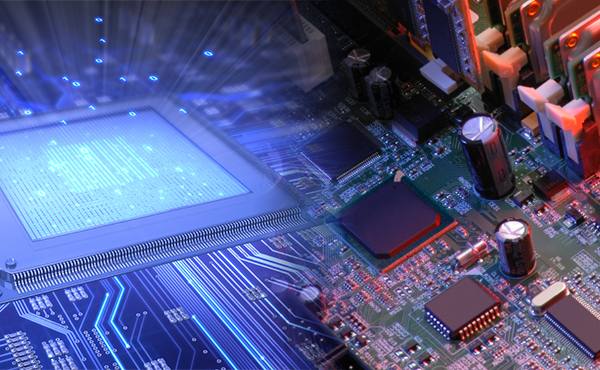In the rapidly evolving landscape of security technology, the quest for more efficient, reliable, and versatile systems is unending. Amidst this technological sprint, a relatively unassuming hero has emerged: the Embedded Single-Board Computer (SBC). These compact yet powerful devices are revolutionizing how security systems operate, offering unprecedented capabilities and flexibility. This article delves into the world of embedded SBCs, shedding light on their advantages, applications, and how they’re transforming the security sector.
Embedded SBCs: The Heart of Modern Security Systems
Before diving into the specifics, it’s essential to understand what embedded SBCs are and why they’re becoming indispensable in security systems. Embedded SBCs are complete computers built on a single circuit board, including a microprocessor, memory, input/output (I/O) features, and other functionalities, often in a PCIe/104™ variant. Their compact size, coupled with the ability to run without moving parts, like fans, makes them ideal for security applications where reliability and durability are paramount.
Advantages in Security Systems
The advantages of embedded SBCs in security systems are manifold:
- Compactness: Their small footprint allows for integration into a variety of security devices.
- Low Power Consumption: Essential for applications where energy efficiency is crucial.
- High Reliability: With fewer moving parts, they are less prone to mechanical failures.
- Customizability: They can be tailored to meet specific security needs, providing flexibility across applications.
Enabling Real-time Data Processing
One of the standout features of embedded SBCs is their capability to process and analyze data in real time. This is critical for security applications where timely response can be the difference between prevention and disaster. Whether it’s facial recognition algorithms running on an access control system or real-time analysis of video feeds to detect suspicious activities, SBCs provide the computational horsepower to handle complex algorithms efficiently.
Applications of Embedded SBCs in Security
Embedded single-board computers (SBCs) are crucial in the security domain, utilized across various security systems to boost performance and reliability. These applications range from simple surveillance cameras to complex biometric identification systems and sophisticated intrusion detection systems. The versatility of embedded SBCs allows them to process and analyze data swiftly, enhancing real-time responses in security operations. Moreover, their robustness and ability to operate under extreme conditions make them ideal for use in critical infrastructure protection, where failure can have severe consequences. As technology advances, the potential applications of embedded SBCs in security continue to expand, driving forward innovations that improve safety and security measures.
Reinventing Access Control
In the realm of access control, embedded Single Board Computers (SBCs) are revolutionizing the way entry systems operate by integrating advanced features such as biometric recognition and NFC-based entry. These systems handle data processing locally, which not only speeds up authentication significantly but also enhances security by minimizing the risk of data interception associated with cloud-based systems. For more details, visit https://www.liaisontechgroup.com website. This local processing capability of embedded SBCs allows for a more robust and secure framework in access control technologies, meeting modern security demands with greater efficiency and reliability.
Revolutionizing Video Surveillance
Embedded single-board computers (SBCs) are dramatically transforming the landscape of video surveillance, enabling a shift from passive recording to proactive, intelligent monitoring. With their robust computing power, these systems can analyze video streams in real-time, identifying potential threats, tracking movements across cameras, and recognizing faces with high accuracy. This capability turns raw video data into actionable intelligence, allowing for quicker responses to incidents and enhancing overall security measures by providing detailed insights and alerts when unusual activities are detected.
Enhancing Intrusion Detection
Embedded single-board computers (SBCs) significantly enhance intrusion detection systems by effectively managing the signals from various sensors. These advanced computers use sophisticated algorithms to distinguish between false alarms and real threats, thereby reducing unnecessary alerts. Over time, these algorithms adapt and learn from previous false positives, continually improving the system’s accuracy and reliability. This capability allows for more effective monitoring and ensures that security responses are swift and accurate, making embedded SBCs invaluable in modern security infrastructures.
Fun Facts and Future Prospects
- Did you know? The first single-board computer, the “dyna-micro”, was introduced in 1976, powered by the Intel C8080A microprocessor. It’s fascinating to see how far we’ve come from those early days!
- Looking Ahead: As the Internet of Things (IoT) continues to expand, the role of embedded SBCs in security systems is set to become even more critical. With advancements in AI and machine learning, these devices will not only make security systems more efficient but also more intelligent, capable of predicting and preempting security breaches before they occur.
Embedded single-board computers (SBCs) are spearheading a technological revolution in security systems, blending unparalleled performance, reliability, and adaptability. As these technologies advance, they pave the way for increasingly sophisticated, resilient, and intelligent security solutions. In the demanding and ever-evolving security sector, embedded SBCs prove indispensable, embodying the integration of cutting-edge technology to ensure robust protection. Their continuous evolution underscores a future where enhanced safety and innovative security measures are paramount, demonstrating the critical role of technology in safeguarding our environments.
